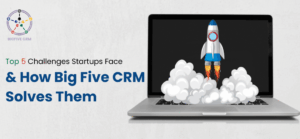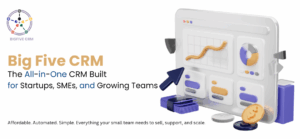From Spreadsheets to AI- Powered CRM
In the world of business, the journey from spreadsheets to sophisticated CRM (Customer Relationship Management) platforms is nothing short of transformative. Once reliant on basic contact lists, companies now use AI-driven tools that manage, analyze, and enhance every customer interaction. This evolution has led to best CRM systems that not only streamline processes but also uncover insights to drive growth, increase customer satisfaction, and improve operational efficiency.
Let’s explore the CRM capabilities that every CRM should have, covering how these powerful features support business success and set the foundation for future innovation.
The Early Days of CRM: From Rolodex to Spreadsheets
Humble Beginnings
In the early days, customer information was organized using physical Rolodexes and spreadsheets. Businesses manually tracked clients, sales leads, and deals, often struggling to stay updated. With basic data scattered across notes and columns, sales teams lacked a centralized system to capture valuable insights or view customer interactions at a glance. While rudimentary, spreadsheets provided the first structured approach to organizing customer data.
First Steps Toward Automation
As companies expanded, so did the need for something more efficient. Businesses needed tools to automate repetitive tasks and provide quicker access to customer information. The rise of simple database systems provided a glimpse of what would eventually evolve into modern CRM, allowing basic sorting and filtering of contacts.
Digital Transformation: The Shift to Cloud-Based CRM Systems
The Power of Cloud Technology
The introduction of cloud technology marked a massive shift for CRM. Cloud-based CRM platforms allowed companies to store data centrally, enabling real-time access across locations. No longer limited by physical files or desktops, teams could access and update customer information instantly. Cloud CRM also facilitated scalability, meaning systems could grow alongside the business with minimal disruption.
Cost Efficiency and Accessibility
With cloud solutions, CRMs became accessible to businesses of all sizes. SaaS (Software as a Service) providers offered flexible pricing models, making CRM affordable even for small businesses. This democratization of CRM software enabled more organizations to leverage advanced tools without investing heavily in infrastructure.
The Rise of No-Code and White-Label CRMs
No-Code CRMs: Accessibility for All
No-code CRM platforms introduced another level of customization, enabling users to modify systems without technical expertise. This innovation allows businesses to tailor CRM workflows, dashboards, and reports without needing coding knowledge. No-code solutions empower teams to design workflows that meet specific operational needs, resulting in greater efficiency and user satisfaction.
White-Label CRMs: Building Unique Brand Experiences
For businesses looking to create a unique brand experience, white-label CRMs provide the option to customize interfaces and functionalities fully. With a white-label CRM, companies can add logos, adjust layouts, and personalize the experience for internal teams and clients. These solutions also support resellers and agencies, allowing them to offer CRM services to help other business grow under their own brand.
Big Five CRM: Modern CRM Essentials
1. Data Management and Centralization
Today’s CRM systems consolidate customer data from multiple channels into a single view. This centralization allows businesses to track each customer’s journey and provides context for every interaction. Centralized data management enables informed decision-making and more personalized customer service, setting the foundation for the other core features.
2. Automation: From Workflows to AI Insights
Automation in CRM has evolved from simple task assignments to AI-driven insights. Automated workflows eliminate manual tasks, ensuring faster response times and seamless transitions between teams. AI-powered automation can predict customer behavior, enabling proactive engagement, which is particularly helpful for large-scale operations.
3. Integration Capabilities
A CRM is only as powerful as the tools it connects with. Integrating CRM with other platforms (like email, marketing, social media, and e-commerce) provides a holistic view of customer interactions and improves productivity by reducing the need to switch between systems. The integration capability ensures data consistency and enables a more unified customer experience.
4. Analytics and Reporting
Modern CRMs are equipped with advanced analytics that transform raw data into actionable insights. Businesses can track performance metrics, identify trends, and forecast sales, making data-driven decisions easier. Analytical dashboards empower teams to understand customer needs and tailor engagement strategies for optimal results.
5. AI and Predictive Insights
AI has revolutionized CRM by providing predictive insights, sentiment analysis, and personalized recommendations. Using machine learning algorithms, AI-powered CRMs can predict customer behavior, optimize marketing campaigns, and offer recommendations that drive conversions. This level of insight is invaluable in delivering personalized customer experiences and staying competitive in a fast-paced market.
The Future of CRM: AI-Driven, Customer-Centric Solutions
The evolution from spreadsheets to AI-powered CRM represents an ongoing shift towards personalization and efficiency. As CRM technology advances, we can expect even more integration with AI, machine learning, and predictive analytics, transforming CRMs into tools that not only respond to but anticipate customer needs.
AI-driven solutions will become more customer-centric, analyzing vast datasets to deliver insights that feel tailored and proactive. With continuous advancements, the future CRM will provide a 360-degree customer view, fostering stronger relationships and delivering value beyond expectations.
Conclusion: Ready to Upgrade to a Modern CRM?
The journey from spreadsheets to AI-powered CRM highlights the transformative impact of technology on customer relationships. With the capabilities—data management, automation, integration, analytics, and AI insights— All-in-ONE CRMs are essential for businesses seeking to build meaningful customer relationships and stay competitive.
Get Our CRM Today and experience the future of customer relationship management firsthand. From small businesses to large enterprises, our CRM is built to scale, adapt, and empower you with tools that make a difference. Get CRM Consulting Services from Expert for the better results




